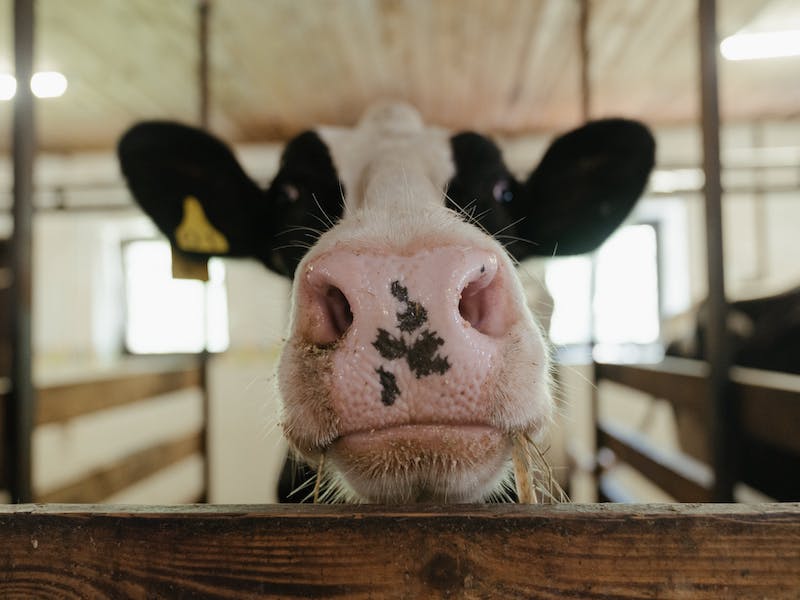Canada’s food crisis has been ongoing, with around 5.8 million Canadians experiencing some extent of food insecurity in 2021 alone. However, with the potential re-emergence of mad cow disease, this food insecurity could take another drastic turn.
It was thought that we had seen the last of mad cow disease after the epidemic in the 1990s which originated in the UK. However, it has made a comeback. Mad cow disease, or Bovine Spongiform Encephalopathy (BSE), is a lethal condition affecting the nervous system of cows. A variant of Creutzfeldt-Jakob Disease (vCJD) is considered the human equivalent of mad cow disease and is contracted through the consumption of beef that is contaminated with the BSE infectious agent, called a prion. This fatal disease results in the degeneration of the human brain and spinal cord.
On May 19, the US Department of Agriculture (USDA) announced that an atypical case of mad cow disease was discovered in a cow in Tennessee. This is following a reported case in February in Brazil, as well as two similar cases in February in Switzerland. The USDA confirmed that the affected cow had not been slaughtered, and thus had not entered the food supply chain. While this sounds like positive news, it is worth evaluating the threats to Canadian food security, as well as global health security that could have emerged from this scare.
How is Canada affected by this? The US is Canada’s leading exporter of beef. In fact, 60% of Canada’s imported beef is supplied by the US, with the second leading exporter being the EU with only around 8.5%. Moreover, it has long been said that the US and Canada’s border is the largest undefended border in the world. While there are many benefits to being so closely tied to the US, this instance begs the question of whether there are certain things the borders should be defended against.
As seen with the COVID-19 pandemic, it is evident that the spread of diseases can become rampant beyond control due to globalization and the openness of borders. And while globalization poses a wealth of advantages for economies through trade, culture, and education, it can be a real threat to both food and global health security.
Canada previously closed its borders to US beef in 2003 during the BSE epidemic, after reported cases of the disease in American cattle. Similarly, in May of 2003, numerous countries closed their borders to Canadian beef after reported cases of mad cow disease. In addition to health and food security, this drastically affected the Canadian economy, as the lack of exports meant that cattle farms were seeing an all-time low income and an oversupply of beef that no one could consume.
Another example of this threat to the intersection of food and global health security is the recent pediatric E. coli outbreaks in Calgary, potentially due to contaminated food being served in daycares. With the contagious nature of E. coli, cases have been seen to continually rise in the last two weeks, and as of September 11, counts had reached a total of 231. Although both the mad cow disease and E. coli cases have not been exacerbated to a level of global alarm, it certainly is jarring to think about the potential harm such diseases could cause if proper policies are not in place to preserve biosecurity.
Biosecurity policies are implemented in order to mitigate the spread of transmission of diseases through animals and plants. As it stands currently, Canada’s biosecurity laws consist of import bans on products that are known to be correlated to certain foreign diseases, although BSE is not one of them. In 1997, following the World Health Organization (WHO)’s recommendations, both Canada and the US had introduced feed bans, as cattle were primarily being infected by the feed they were consuming. In addition to this, the World Organisation for Animal Health had implemented surveillance requirements for the screening of BSE in cattle, which Canada has almost always been consistently meeting since 1993.
The Centres for Disease Control and Prevention state that the threat to human health from BSE is extremely low. With these measures in place, it is likely that this risk will stay negligible. Yet, it is imperative that the WHO and countries stay proactive with monitoring the progression of BSE and similar diseases, in order to prevent the need for other multilateral organizations to get involved. Collaboration and prevention is essential for maintaining the fragile balance of health security across the globe.
With the world just recovering from the effects of the COVID-19 pandemic, the last thing anyone would want is another large-scale threat to global health, let alone combined with food insecurity.
Photo: “White and Black Cow Head” (2020) by Cottonbro Studio via Pexel. Public domain.
Disclaimer: Any views or opinions expressed in articles are solely those of the authors and do not necessarily represent the views of the NATO Association of Canada.




